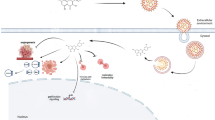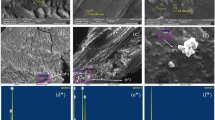Abstract
Quercetin, the plant-derived phenolic compounds, plays a pivotal role in controlling hemostasis, by having potent antioxidant and free-radical scavenging properties. This flavonoid in combination with chemotherapeutic drugs improves the efficacy of these agents in induction of apoptosis in cancer cells. This study investigated the role of nano-quercetin (phytosome) in doxorubicin-induced apoptosis. Nanoparticles were characterized for particle size, zeta potential, scanning electron microscopy (SEM) and differential scanning calorimetric assessments. Anti-proliferative effect of formulations was evaluated by MTT assay. mRNA expression levels of target genes were measured by real time RT-PCR. The mean size of nanoparticles was 85 ± 2 nm with nearly narrow size distribution which was confirmed by SEM analysis. Our results showed that co-treatment of MCF-7 breast cancer cells with nano-quercetin and doxorubicin increased the percentage of apoptosis from 40.11 ± 7.72–58 ± 7.13 (p < 0.05). Furthermore, mRNA expression levels for downstream genes including NQO1 and MRP1 showed a marked decrease (p < 0.05). Taken together, our results suggest that phytosome technology can elevate the efficacy of chemotherapeutics by increasing the permeability of tumor cells to chemical agents. Our findings introduce a novel phytosome-dependent strategy to improve delivery of doxorubicin to the breast cancerous tissues.




Similar content being viewed by others
References
DeSantis C, Ma J, Bryan L, Jemal A (2014) Breast cancer statistics, 2013. CA Cancer J Clin 64(1):52–62
Gatti L, Zunino F (2005) Overview of tumor cell chemoresistance mechanisms. In: Blumenthal RD (ed) Chemosensitivity: Volume II. Springer, New York, pp 127–148
Li W-J, Zhong S-L, Wu Y-J, Xu W-D, Xu J-J, Tang J-H, Zhao J-H (2013) Systematic expression analysis of genes related to multidrug-resistance in isogenic docetaxel-and adriamycin-resistant breast cancer cell lines. Mol Biol Rep 40(11):6143–6150
Chang A (2011) Chemotherapy, chemoresistance and the changing treatment landscape for NSCLC. Lung Cancer 71(1):3–10
Fodale V, Pierobon M, Liotta L, Petricoin E (2011) Mechanism of cell adaptation: When and how do cancer cells develop chemoresistance? Cancer J 17(2):89–95
Cengiz E, Karaca B, Kucukzeybek Y, Gorumlu G, Gul MK, Erten C, Atmaca H, Uzunoglu S, Karabulut B, Sanli UA (2010) Overcoming drug resistance in hormone-and drug-refractory prostate cancer cell line, PC-3 by docetaxel and gossypol combination. Mol Biol Rep 37(3):1269–1277
Rejinold NS, Baby T, Nair SV, Jayakumar R (2013) Paclitaxel loaded fibrinogen coated CdTe/ZnTe core shell nanoparticles for targeted imaging and drug delivery to breast cancer cells. J Biomed Nanotechnol 9(10):1657–1671
Brannon-Peppas L, Blanchette JO (2012) Nanoparticle and targeted systems for cancer therapy. Adv Drug Deliv Rev 64:206–212
Vriend J, Reiter RJ (2015) The Keap1-Nrf2-antioxidant response element pathway: a review of its regulation by melatonin and the proteasome. Mol Cell Endocrinol 401:213–220
Wen X, Thorne G, Hu L, Joy, Aleksunes LM (2015) Activation of NRF2 signaling in HEK293 cells by a first‐in‐class direct KEAP1‐NRF2 inhibitor. J Biochem Mol Toxicol 29(6):261–266
Homma S, Ishii Y, Morishima Y, Yamadori T, Matsuno Y, Haraguchi N, Kikuchi N, Satoh H, Sakamoto T, Hizawa N (2009) Nrf2 enhances cell proliferation and resistance to anticancer drugs in human lung cancer. Clin Cancer Res 15(10):3423–3432
Lister A, Nedjadi T, Kitteringham NR, Campbell F, Costello E, Lloyd B, Copple IM, Williams S, Owen A, Neoptolemos JP (2011) Nrf2 is overexpressed in pancreatic cancer: implications for cell proliferation and therapy. Mol Cancer 10:37
Moon EJ, Giaccia A (2015) Dual roles of NRF2 in tumor prevention and progression: possible implications in cancer treatment. Free Radic Biol Med 79:292–299
Hou X, Bai X, Gou X, Zeng H, Xia C, Zhuang W, Chen X, Zhao Z, Huang M, Jin J (2015) 3′, 4′, 5′, 5, 7-Pentamethoxyflavone sensitizes cisplatin-resistant A549 cells to cisplatin by inhibition of Nrf2 pathway. Mol Cells 38(5):396–401
Valenzuela M, Glorieux C, Stockis J, Sid B, Sandoval J, Felipe K, Kviecinski M, Verrax J, Calderon PB (2014) Retinoic acid synergizes ATO-mediated cytotoxicity by precluding Nrf2 activity in AML cells. Br J Cancer 111(5):874–882
Chian S, Thapa R, Chi Z, Wang XJ, Tang X (2014) Luteolin inhibits the Nrf2 signaling pathway and tumor growth in vivo. Biochem Biophys Res Commun 447(4):602–608
Olayanju A, Copple IM, Bryan HK, Edge GT, Sison RL, Wong MW, Lai Z-Q, Lin Z-X, Dunn K, Sanderson CM (2015) Brusatol provokes a rapid and transient inhibition of Nrf2 signaling and sensitizes mammalian cells to chemical toxicity—implications for therapeutic targeting of Nrf2. Free Radic Biol Med 78:202–212
Sabzichi M, Hamishehkar H, Ramezani F, Sharifi S, Tabasinezhad M, Pirouzpanah M, Ghanbari P, Samadi N (2013) Luteolin-loaded phytosomes sensitize human breast carcinoma MDA-MB 231 cells to doxorubicin by suppressing Nrf2 mediated signalling. Asian Pac J Cancer Prev: APJCP 15(13):5311–5316
Kahraman A, Çakar H, Köken T (2012) The protective effect of quercetin on long-term alcohol consumption-induced oxidative stress. Mol Biol Rep 39(3):2789–2794
Sun M, Nie S, Pan X, Zhang R, Fan Z, Wang S (2014) Quercetin-nanostructured lipid carriers: characteristics and anti-breast cancer activities in vitro. Colloids Surf B 113:15–24
Amin T, Bhat SV (2012) A review on phytosome technology as a novel approach to improve the bioavailability of nutraceuticals. Int J Adv Res Technol 1(3):43–57
Patil M, Patil S, Chittam K, Wagh R (2012) Phytosomes: novel approach in herbal medicines. Asian J Pharm Sci Res 2:1–9
Jain N, Gupta BP, Thakur N, Jain R, Banweer J, Jain DK, Jain S (2010) Phytosome: a novel drug delivery system for herbal medicine. Int J Pharm Sci Drug Res 2(4):224–228
Chang C, Zhu Y, Tang X, Tao W (2011) The anti-proliferative effects of norcantharidin on human HepG2 cells in cell culture. Mol Biol Rep 38(1):163–169
Innamorato NG, Rojo AI, García-Yagüe ÁJ, Yamamoto M, De Ceballos ML, Cuadrado A (2008) The transcription factor Nrf2 is a therapeutic target against brain inflammation. J Immunol 181(1):680–689
Lee J-S, Surh Y-J (2005) Nrf2 as a novel molecular target for chemoprevention. Cancer Lett 224(2):171–184
Zhang P, Singh A, Yegnasubramanian S, Esopi D, Kombairaju P, Bodas M, Wu H, Bova SG, Biswal S (2010) Loss of Kelch-like ECH-associated protein 1 function in prostate cancer cells causes chemoresistance and radioresistance and promotes tumor growth. Mol Cancer Ther 9(2):336–346
Kweon M-H, Adhami VM, Lee J-S, Mukhtar H (2006) Constitutive overexpression of Nrf2-dependent heme oxygenase-1 in A549 cells contributes to resistance to apoptosis induced by epigallocatechin 3-gallate. J Biol Chem 281(44):33761–33772
Huang C-S, Lii C-K, Lin A-H, Yeh Y-W, Yao H-T, Li C-C, Wang T-S, Chen H-W (2013) Protection by chrysin, apigenin, and luteolin against oxidative stress is mediated by the Nrf2-dependent up-regulation of heme oxygenase 1 and glutamate cysteine ligase in rat primary hepatocytes. Arch Toxicol 87(1):167–178
Xu K, Liu B, Ma Y, Du J, Li G, Gao H, Zhang Y, Ning Z (2009) Physicochemical properties and antioxidant activities of luteolin-phospholipid complex. Molecules 14(9):3486–3493
Lopez-Lazaro M (2009) Distribution and biological activities of the flavonoid luteolin. Mini Rev Med Chem 9(1):31–59
Akan Z, Garip AI (2013) Antioxidants may protect cancer cells from apoptosis signals and enhance cell viability. Asian Pac J Cancer Prev 14(8):4611–4614
Kawasaki Y, Ishigami S, Arigami T, Uenosono Y, Yanagita S, Uchikado Y, Kita Y, Nishizono Y, Okumura H, Nakajo A (2015) Clinicopathological significance of nuclear factor (erythroid-2)-related factor 2 (Nrf2) expression in gastric cancer. BMC Cancer 15(1):5
Liang G-Y, Lu S-X, Xu G, Liu X-D, Li J, Zhang D-S (2013) Expression of metallothionein and Nrf2 pathway genes in lung cancer and cancer-surrounding tissues. World J Surg Oncol 11(1):199
Akbas SH, Timur M, Ozben T (2005) The effect of quercetin on topotecan cytotoxicity in MCF-7 and MDA-MB 231 human breast cancer cells 1. J Surg Res 125(1):49–55
Paulhill KJ (2008) Quercetin and dietary lipids alter the cellular redox environment of the colonocyte in the promotion stage of colon carcinogenesis. Texas A&M University, College Station
Chen C, Zhou J, Ji C (2010) Quercetin: a potential drug to reverse multidrug resistance. Life Sci 87(11):333–338
Kim MK, K-s Park, Choo H, Chong Y (2015) Quercetin–POM (pivaloxymethyl) conjugates: modulatory activity for P-glycoprotein-based multidrug resistance. Phytomedicine 22(7):778–785
Bhattacharya S, Ghosh AK (2009) Phytosomes: the emerging technology for enhancement of bioavailability of botanicals and nutraceuticals. Int J Health Res 2(3):225–232
Suryawanshi S (2011) Phytosome: an emerging trend in herbal drug treatment. J Med Gene Geno 3:109–114
van Dijk C, Driessen AJ, Recourt K (2000) The uncoupling efficiency and affinity of flavonoids for vesicles. Biochem Pharmacol 60(11):1593–1600
Granado-Serrano AB, Martín M, Bravo L, Goya L, Ramos S (2012) Quercetin modulates Nrf2 and glutathione-related defenses in HepG2 cells: involvement of p38. Chem Biol Interact 195:154–164
Staedler D, Idrizi E, Kenzaoui BH, Juillerat-Jeanneret L (2011) Drug combinations with quercetin: doxorubicin plus quercetin in human breast cancer cells. Cancer Chemother Pharmacol 68(5):1161–1172
Ren D, Villeneuve NF, Jiang T, Wu T, Lau A, Toppin HA, Zhang DD (2011) Brusatol enhances the efficacy of chemotherapy by inhibiting the Nrf2-mediated defense mechanism. Proc Natl Acad Sci 108(4):1433–1438
Hayes JD, McMahon M (2009) NRF2 and KEAP1 mutations: permanent activation of an adaptive response in cancer. Trends Biochem Sci 34(4):176–188
Laurand A, Laroche-Clary A, Larrue A, Huet S, Soma É, Bonnet J, Robert J (2004) Quantification of the expression of multidrug resistance-related genes in human tumour cell lines grown with free doxorubicin or doxorubicin encapsulated in polyisohexylcyanoacrylate nanospheres. Anticancer Res 24(6):3781–3788
Acknowledgments
We are sincerely grateful to Prof.Dastmalchi for providing the necessary structure for successful accomplishment of this research. This work was financially supported by the grant from Biotechnology Research Center, Tabriz University of Medical Sciences.
Author information
Authors and Affiliations
Corresponding author
Ethics declarations
Conflict of interest
The authors declare that there is no conflict of interest.
Rights and permissions
About this article
Cite this article
Minaei, A., Sabzichi, M., Ramezani, F. et al. Co-delivery with nano-quercetin enhances doxorubicin-mediated cytotoxicity against MCF-7 cells. Mol Biol Rep 43, 99–105 (2016). https://doi.org/10.1007/s11033-016-3942-x
Received:
Accepted:
Published:
Issue Date:
DOI: https://doi.org/10.1007/s11033-016-3942-x




